In Ohio, seven captivating species of wrens grace the diverse landscapes, each contributing its unique melody to the state’s avian chorus.
These birds weave a tapestry of biodiversity across woodlands, wetlands, and urban areas, from the vibrant Carolina Wren to the elusive Sedge Wren. Their small yet vibrant presence adds a touch of enchantment to Ohio’s natural canvas.
This exploration delves into these seven wren species’ distinct characteristics, behaviors, and habitats, shedding light on their vital roles in the state’s ecosystems.
Join us on a journey through the songs and secrets of these feathered inhabitants as we unravel the rich tapestry of wrens in Ohio. Stay focused.
Common Characteristics of Wrens In Ohio
While belonging to different species, Wrens in Ohio share several common characteristics that define their presence in the state.
These traits contribute to their adaptability and success in diverse habitats. Here are some common characteristics of wrens found in Ohio:
- Small Size: Wrens in Ohio are generally small-sized birds, with most species measuring around 4 to 7 inches long. Their compact build allows them to navigate through dense vegetation efficiently.
- Energetic Foragers: Wrens are known for their energetic and agile foraging behavior. They actively search for insects, spiders, and other invertebrates in various habitats, contributing to natural pest control.
- Melodious Songs: Wrens are renowned for their lively and often loud songs. Each species has a distinctive vocalization, and their melodious calls are a common sound in Ohio’s woodlands, marshes, and gardens.
- Nest-building Prowess: Wrens exhibit remarkable nest-building skills. They often construct cup-shaped nests in various locations, including tree branches, shrubs, and even man-made structures like birdhouses.
- Territorial Behavior: Wrens are territorial birds, especially during the breeding season. They defend their nesting territories vigorously, and their vocalizations serve as a means of communication and territorial assertion.
- Cryptic Coloration: Many wren species display cryptic coloration, featuring brown or dull plumage that helps them blend into their surroundings. This camouflage aids in avoiding predators and enhances their ability to forage discreetly.
- Adaptability to Various Habitats: Wrens in Ohio showcase adaptability to diverse habitats, including woodlands, marshes, and urban areas. This flexibility allows them to thrive in various environments, contributing to their widespread distribution.
- Cavity Nesters: Several wren species are cavity nesters, utilizing natural or artificial cavities for nesting. This behavior has led to their successful integration into human-altered landscapes, utilizing structures like birdhouses.
Understanding these common characteristics provides insight into the ecological roles of wrens in Ohio and underscores the importance of preserving their habitats for the overall health of local ecosystems.
7 Wrens In Ohio
Discover the diverse wren species gracing Ohio’s landscapes. From the Carolina Wren’s vibrant melodies to the Sedge Wren’s elusive charm, each bird brings a unique flair.
Dive into their distinctive lifestyles, habitats, and contributions to Ohio’s rich avian tapestry in this exploration of wrens in the Buckeye State.
1. Carolina Wren
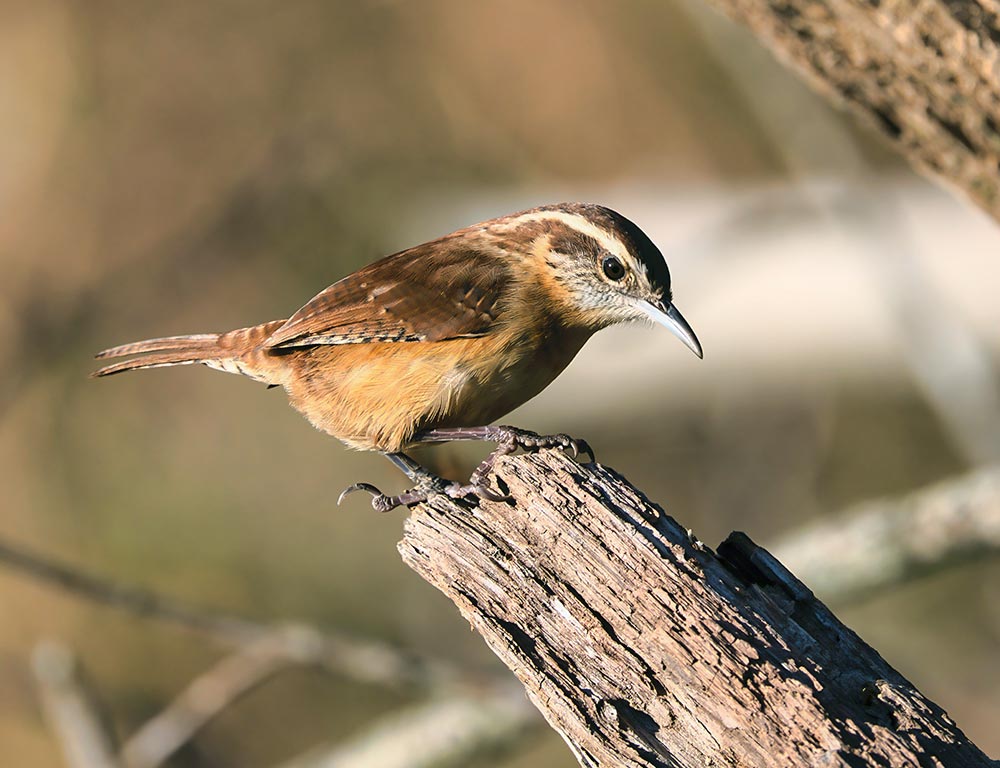
- Scientific Name: Thryothorus ludovicianus
- Population: Common and widespread in Ohio.
- Life Span: Typically 3 to 4 years.
- Size: About 5.5 to 6.3 inches.
- Weight: Approximately 0.7 to 1 ounce.
- Food: Insects, spiders, and small fruits.
- Wingspan: Around 11 inches.
- Status: Stable.
The Carolina Wren, a familiar bird in Ohio, is known for its vibrant reddish-brown plumage, distinctive white eyebrow stripe, and robust voice.
These wrens are highly adaptable and can be found in various habitats, including woodlands, suburbs, and gardens.
They are territorial birds and often communicate with loud and melodious songs. Carolina Wrens are cavity nesters, utilizing natural or man-made structures.
Carolina Wrens are energetic and bold despite their small size, exploring their surroundings with agility. Their diet consists mainly of insects and spiders, making them valuable for pest control.
They forage on the ground and in low vegetation, utilizing their long bills to search for prey. Carolina Wrens is known for its resilience, and its ability to survive harsh winters in Ohio showcases its adaptability.
2. Winter Wren
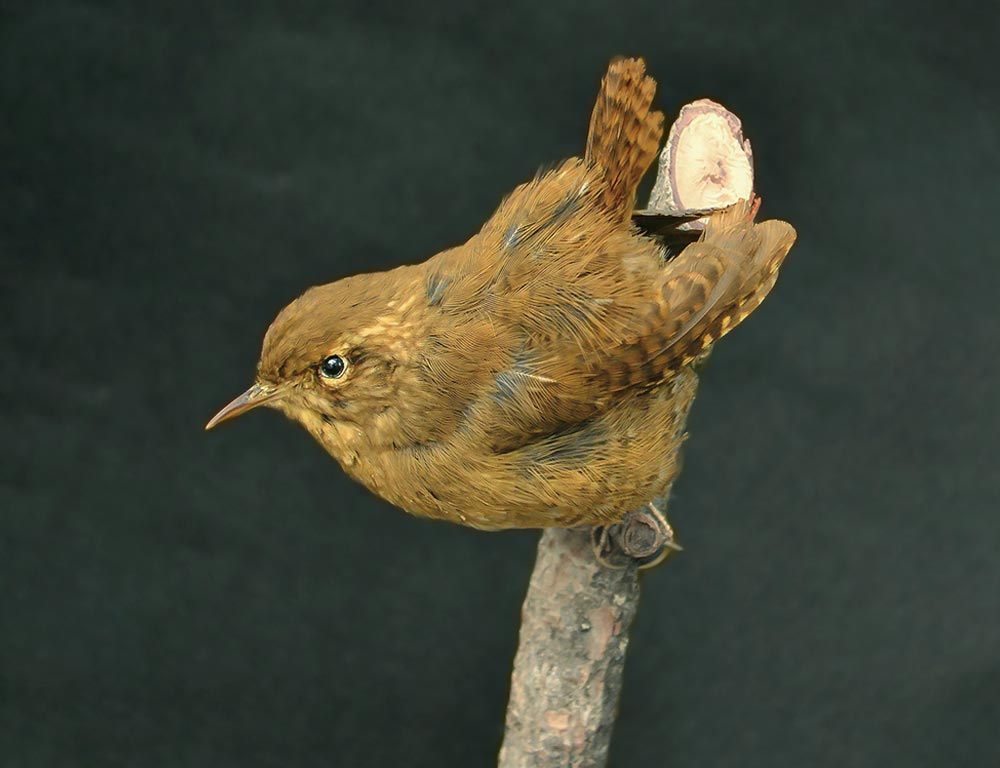
- Scientific Name: Troglodytes hiemalis
- Population: Common, especially during migration.
- Life Span: Usually 2 to 4 years.
- Size: Approximately 3.5 to 4.9 inches.
- Weight: About 0.25 to 0.38 ounces.
- Food: Insects, spiders, and small invertebrates.
- Wingspan: Around 5.9 inches.
- Status: Stable.
The Winter Wren, a charming and tiny bird, is a transient visitor in Ohio, often seen during the migration seasons. Despite its small size, it has a loud and melodious song, contributing to the chorus of the Ohio woodlands.
These wrens prefer dense vegetation and are often found near water sources. They are agile climbers and forage in the underbrush, utilizing their slender bills to extract insects and invertebrates.
Winter Wrens are known for their distinctive tail-up posture, a behavior that enhances their visibility while foraging.
Winter Wrens build dome-shaped nests on or near the ground, hidden in vegetation. They are meticulous in nest construction, using various materials to create a well-insulated structure.
Despite their name, Winter Wrens are not exclusively tied to winter; their migratory nature allows them to traverse various regions throughout the year.
The Winter Wren brings a touch of enchantment to Ohio’s woodlands, adding its unique song to the avian symphony.
3. Rock Wren
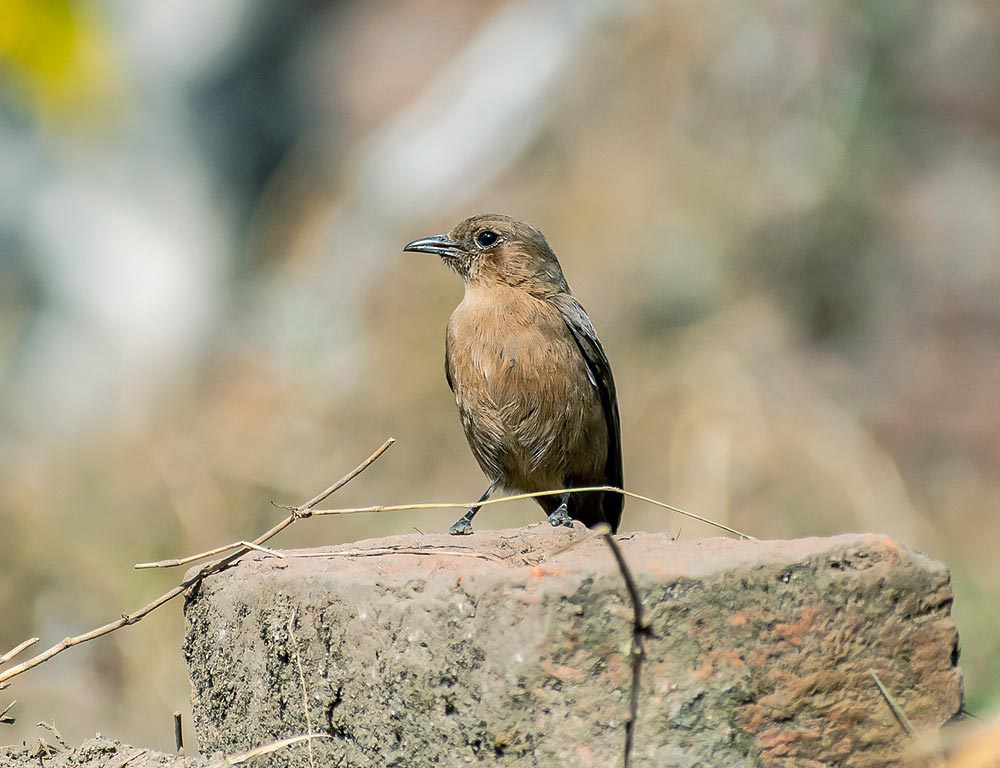
- Scientific Name: Salpinctes obsoletus
- Population: Uncommon and sporadic in Ohio.
- Life Span: Typically 3 to 6 years.
- Size: Around 5.9 to 7.1 inches.
- Weight: Approximately 0.74 to 1.1 ounces.
- Food: Insects, spiders, and other invertebrates.
- Wingspan: Approximately 11.8 inches.
- Status: Varies, with occasional sightings.
The Rock Wren is a less common but fascinating inhabitant of Ohio, often found in rocky habitats such as cliffs, canyons, and rock outcrops.
Their cryptic coloration and behavior make them well-adapted to blending into their rocky surroundings. Rock Wrens are renowned for their climbing abilities, easily traversing steep surfaces.
They build cup-shaped nests in rock crevices, providing a secure environment for their eggs and chicks. Their diet primarily consists of insects and spiders, which they glean from the rock surfaces.
These wrens have distinctive and varied songs, which they use for territorial communication. Despite their name, Rock Wrens are not exclusively tied to rocky environments and can also be found in arid scrublands.
4. Marsh Wren
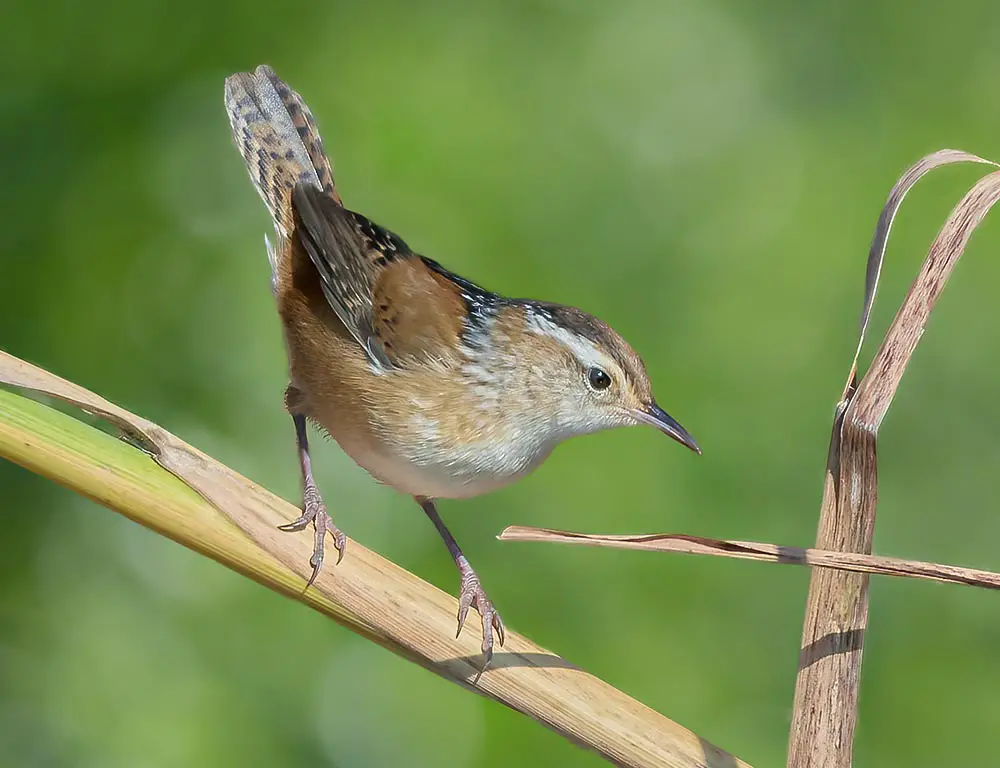
- Scientific Name: Cistothorus palustris
- Population: Common in marshes and wetlands of Ohio.
- Life Span: Typically 2 to 4 years.
- Size: Around 4.3 to 5.1 inches.
- Weight: Approximately 0.4 to 0.5 ounces.
- Food: Insects, spiders, and small invertebrates.
- Wingspan: Approximately 5.9 inches.
- Status: Stable.
The Marsh Wren is a lively and secretive bird commonly found in the marshes and wetlands of Ohio. It is easily identified by its bold black-and-white streaked back and its habit of building multiple nests within its territory.
Marsh Wrens are agile climbers and often forage in the dense vegetation of wetlands. They have a varied diet, including insects, spiders, and small invertebrates.
Known for their vibrant songs, male Marsh Wrens create a series of woven, domed nests in the tall grasses to attract mates. These nests serve as breeding sites and provide shelter from predators.
Despite their small size, Marsh Wrens are territorial and can defend their nesting sites aggressively. Their adaptability to wetland habitats makes them an integral part of the biodiversity in Ohio’s marshy areas.
5. Bewick’s Wren
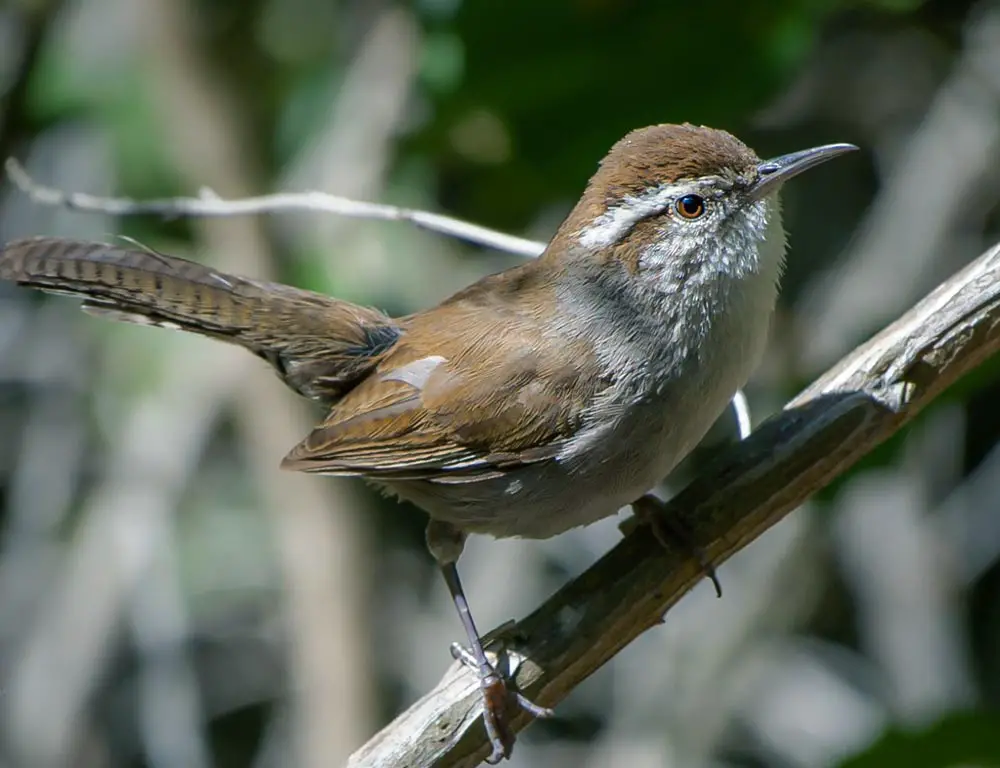
- Scientific Name: Thryomanes bewickii
- Population: Found sporadically but declining in some regions.
- Life Span: Typically 2 to 7 years.
- Size: Approximately 5.1 to 5.5 inches.
- Weight: About 0.3 to 0.5 ounces.
- Food: Insects, spiders, small fruits, and seeds.
- Wingspan: Around 7.5 inches.
- Status: Variable, with local declines.
Bewick’s Wren is a slender, active bird with a distinctive white eyebrow stripe and a long, slightly decurved bill. In Ohio, their presence can be sporadic, and their populations may vary across different regions.
These wrens are skilled foragers, exploring a range of habitats from woodlands to scrublands. Their diet consists of insects, spiders, small fruits, and seeds.
Bewick’s Wrens are known for their complex and melodious songs, contributing to the auditory landscape of their surroundings.
They construct cup-shaped nests in shrubs, trees, or artificial structures. These nests, built by both males and females, provide a secure environment for raising their young.
Unfortunately, Bewick’s Wren populations have declined in some areas, possibly due to habitat loss and competition with other cavity-nesting birds.
6. House Wren
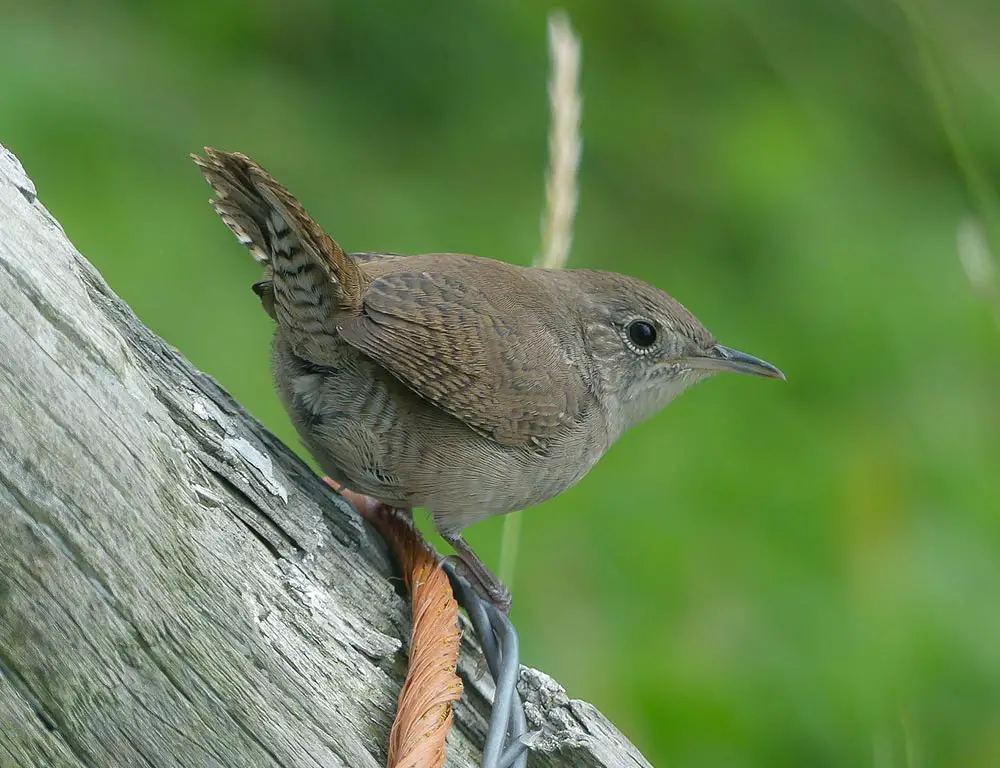
- Scientific Name: Troglodytes aedon
- Population: Common and widespread in Ohio.
- Life Span: Typically 2 to 5 years.
- Size: Around 4.3 to 5.1 inches.
- Weight: Approximately 0.4 to 0.6 ounces.
- Food: Insects, spiders, and small invertebrates.
- Wingspan: Approximately 5.9 inches.
- Status: Stable.
The House Wren is a familiar and energetic bird that can be found throughout Ohio in various habitats, including gardens, woodlands, and urban areas.
Known for their bubbly and effervescent songs, male House Wrens often create multiple nests within their territories to attract females.
These wrens are insectivores, feeding on a diet of insects, spiders, and small invertebrates. They are agile foragers, hopping and flitting through vegetation to capture prey.
House Wrens are cavity nesters, utilizing natural and artificial structures such as birdhouses. Their nests are often characterized by a messy construction of twigs, leaves, and other materials.
Despite their small size, House Wrens are territorial and can defend their nesting sites aggressively. Their adaptability to human-altered environments makes them a common sight in gardens and backyards.
7. Sedge Wren
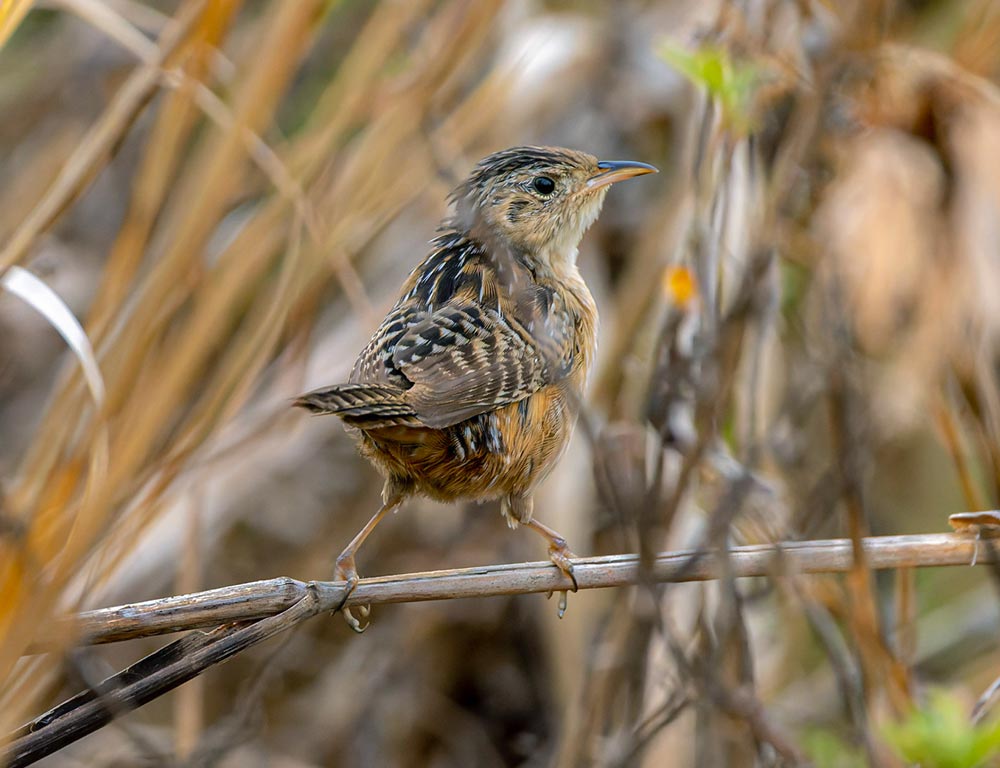
- Scientific Name: Cistothorus platensis
- Population: Sporadic, with localized occurrences in suitable habitats.
- Life Span: Typically 2 to 3 years.
- Size: Around 3.9 to 4.7 inches.
- Weight: Approximately 0.3 to 0.4 ounces.
- Food: Insects, spiders, and small invertebrates.
- Wingspan: Approximately 5.9 inches.
- Status: Variable, with fluctuations in local populations.
The Sedge Wren is a small and elusive bird, often found in grassy and marshy habitats. In Ohio, their presence can be sporadic, with localized occurrences in suitable environments.
Sedge Wrens are skilled at navigating dense vegetation, where they forage for insects, spiders, and small invertebrates.
They have short and rapid songs, which they use for territorial communication. These wrens construct cup-shaped nests in tall grasses, providing a concealed location for breeding.
Due to their preference for specific habitats, the population of Sedge Wrens may be influenced by land use and habitat availability changes.
Their adaptability to grassland ecosystems makes them a unique and important component of Ohio’s avian biodiversity.
How to Preserve Wrens In Ohio?
With their unique characteristics, Ohio’s wrens contribute significantly to the state’s biodiversity.
To ensure the preservation of these charming birds, it’s crucial to implement strategies that safeguard their habitats and well-being. Here are some of the comprehensive points to guide effective conservation efforts:
Habitat Restoration and Protection
Ohio’s diverse ecosystems must be conserved and restored, from wetlands to woodlands. Implement measures to protect critical habitats, ensuring a sustainable environment for wrens to thrive.
Promoting Sustainable Land Use Practices
Encourage land-use practices that prioritize biodiversity conservation. This includes promoting sustainable agriculture, reducing habitat fragmentation, and preserving natural corridors for wrens to move between habitats.
Community Education and Engagement
Raise awareness about the importance of wrens in Ohio’s ecosystems.
Engage communities through educational programs, bird-watching events, and outreach initiatives to foster a sense of responsibility and appreciation for these birds.
Monitoring and Research
Establish monitoring programs to track wren populations, migration patterns, and nesting habits.
Invest in research initiatives to better understand the specific needs of each wren species, enabling more targeted conservation strategies.
Invasive Species Control
Combat the threat of invasive species that can negatively impact wren habitats and food sources. Implement control measures to mitigate the impact of non-native plants and animals on local ecosystems.
Legislation and Policy Advocacy
Advocate for policies and regulations that prioritize wildlife conservation. Work towards enforcing laws protecting natural habitats and prohibiting harmful practices that may negatively affect wrens.
By implementing these comprehensive strategies, Ohio can establish a robust framework for preserving wrens, ensuring these enchanting birds continue enriching the state’s natural heritage for generations.
Wrapping Up
Ohio’s wrens, each with its unique charm, contribute to the state’s rich avian tapestry. From the vibrant Carolina Wren to the elusive Sedge Wren, these birds share common traits of adaptability, energetic foraging, and melodious songs.
Conservation efforts must focus on preserving their diverse habitats, promoting sustainable practices, and engaging communities.
Appreciating these common characteristics, we can ensure wrens’ continued presence and flourishing in Ohio, enriching our natural heritage and maintaining the delicate balance of local ecosystems. Thank you very much.